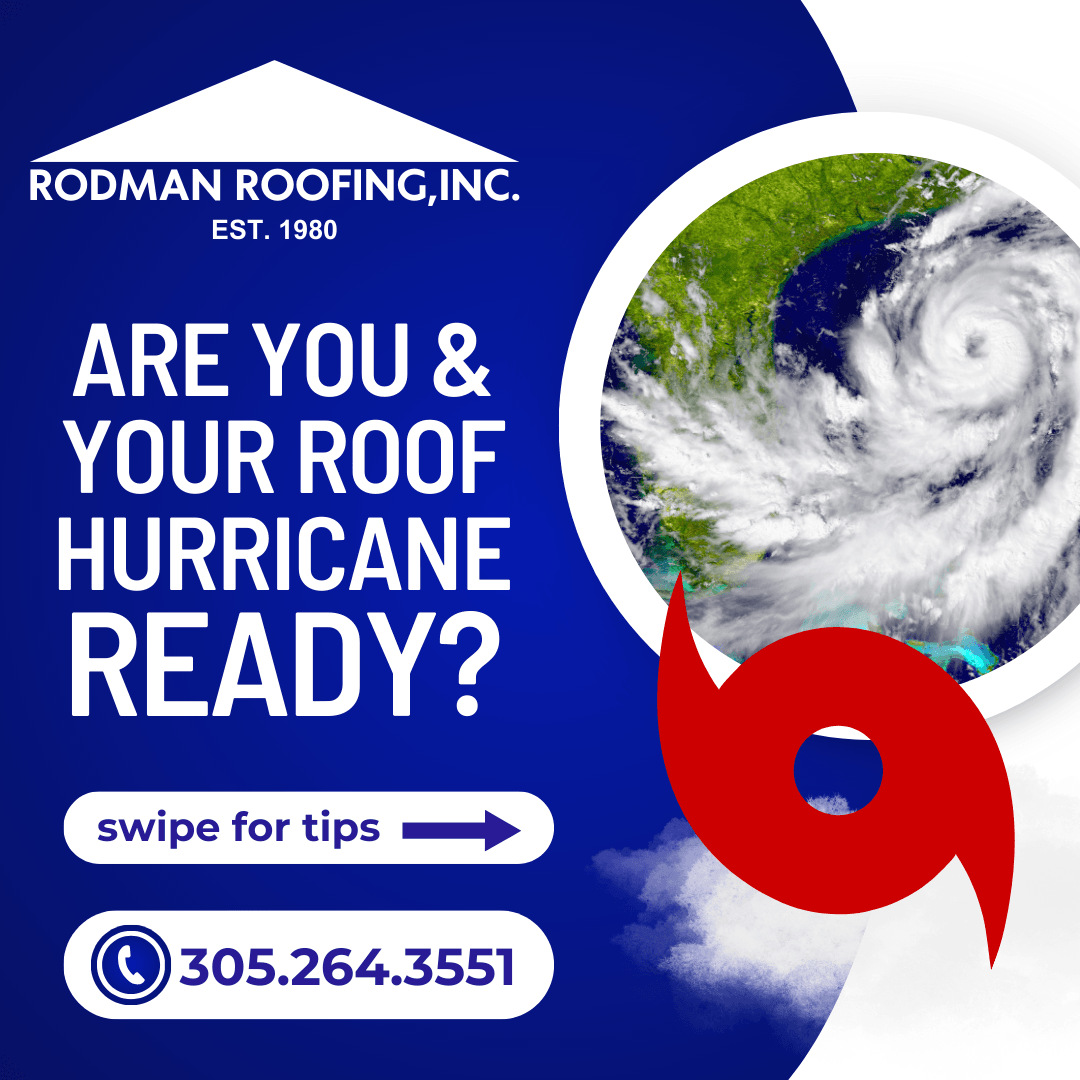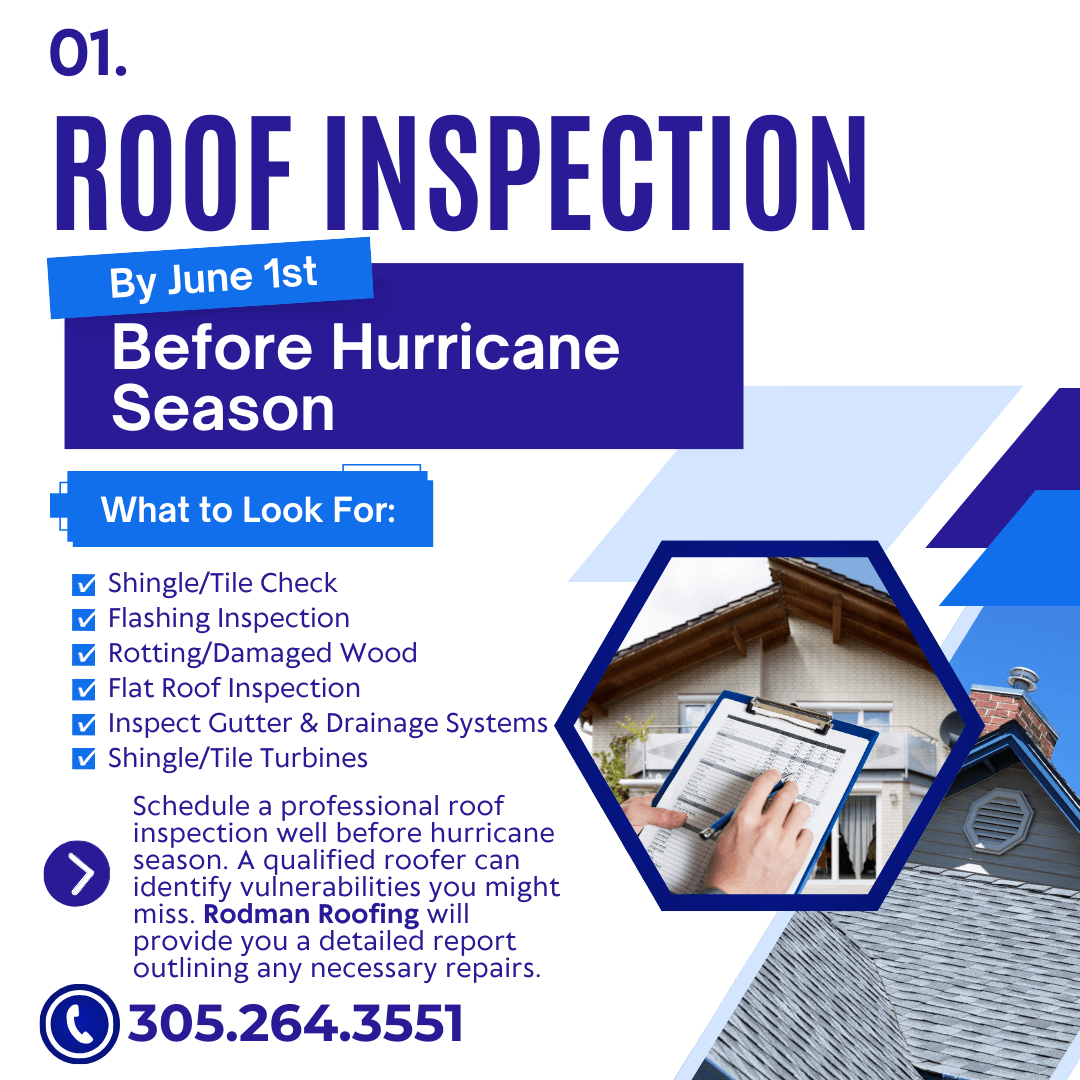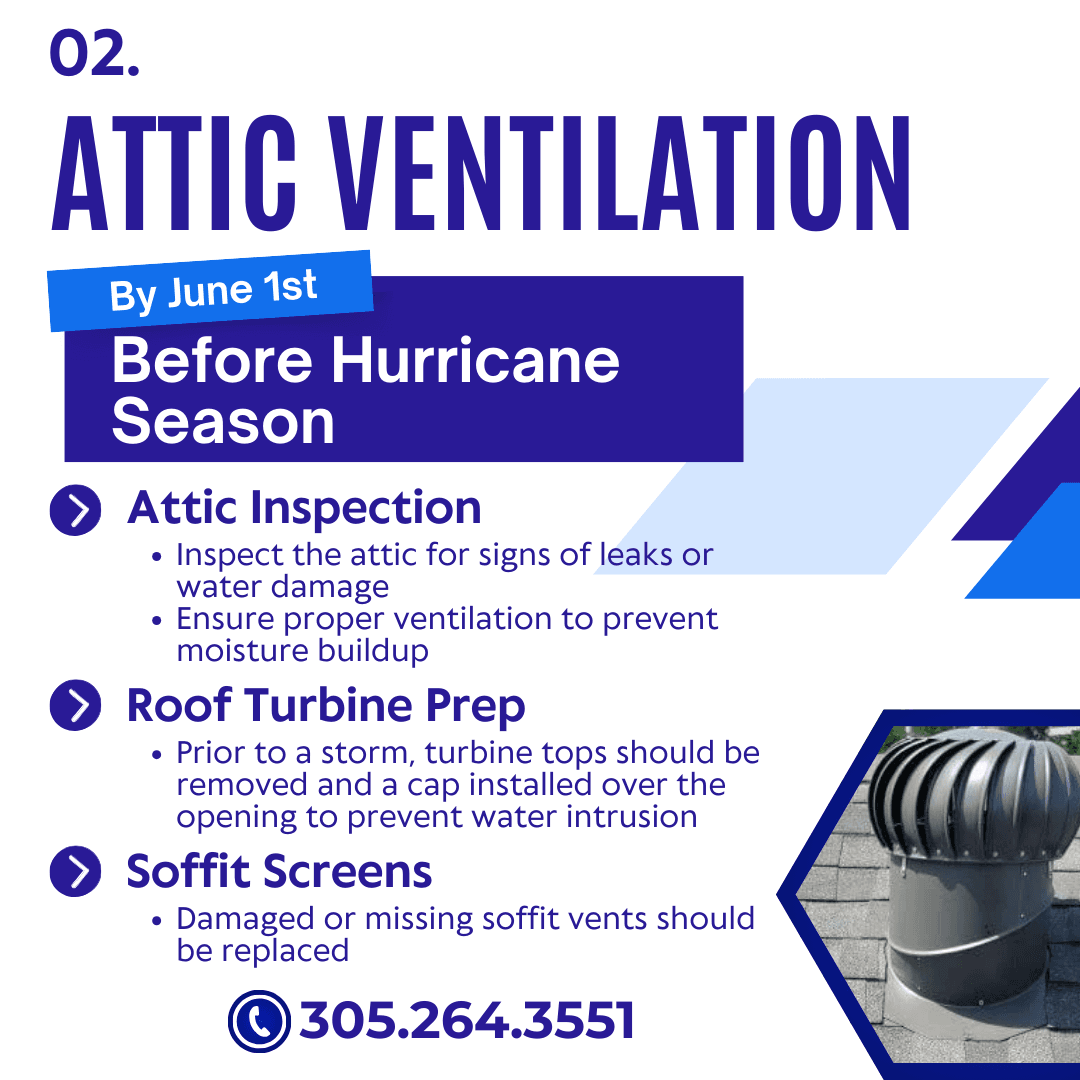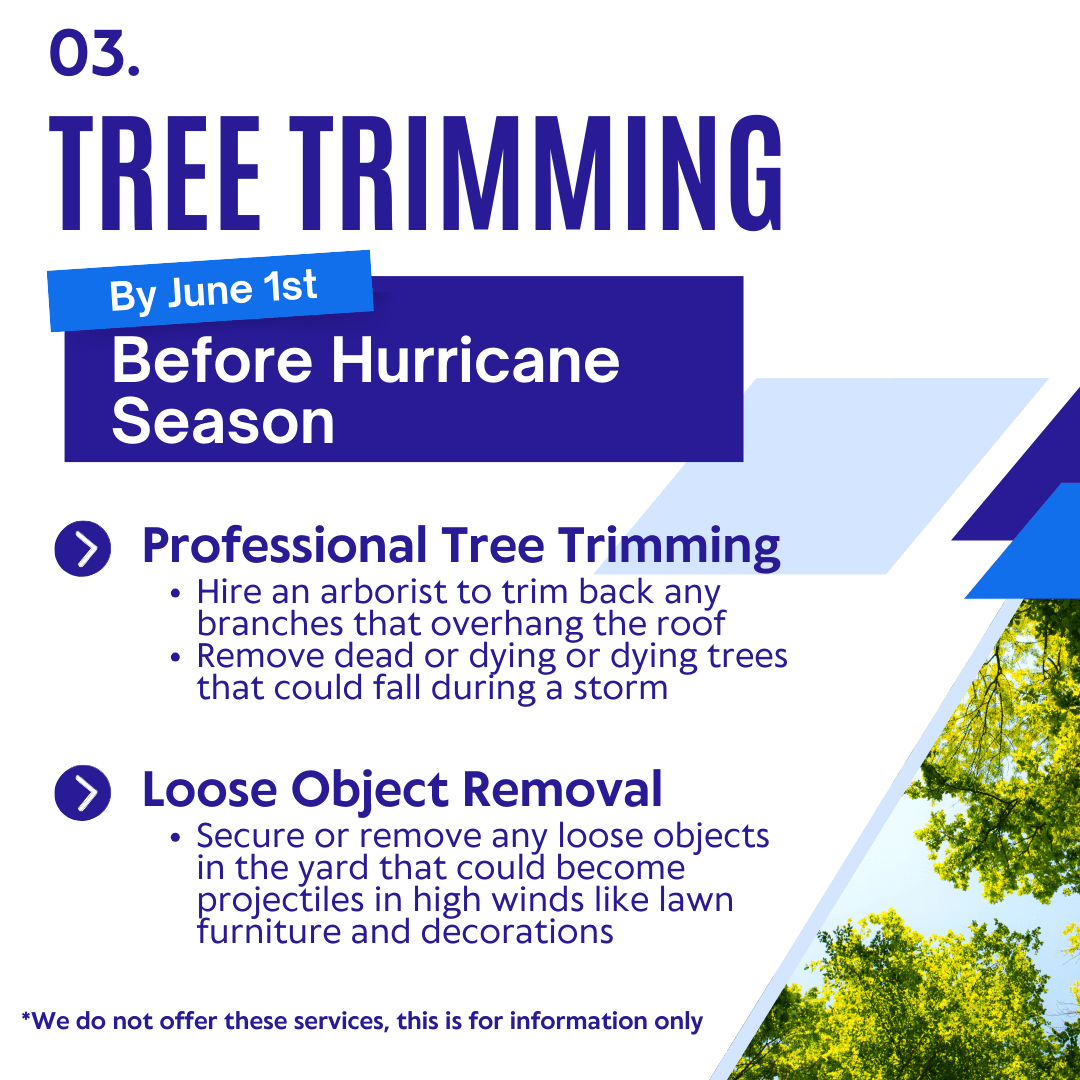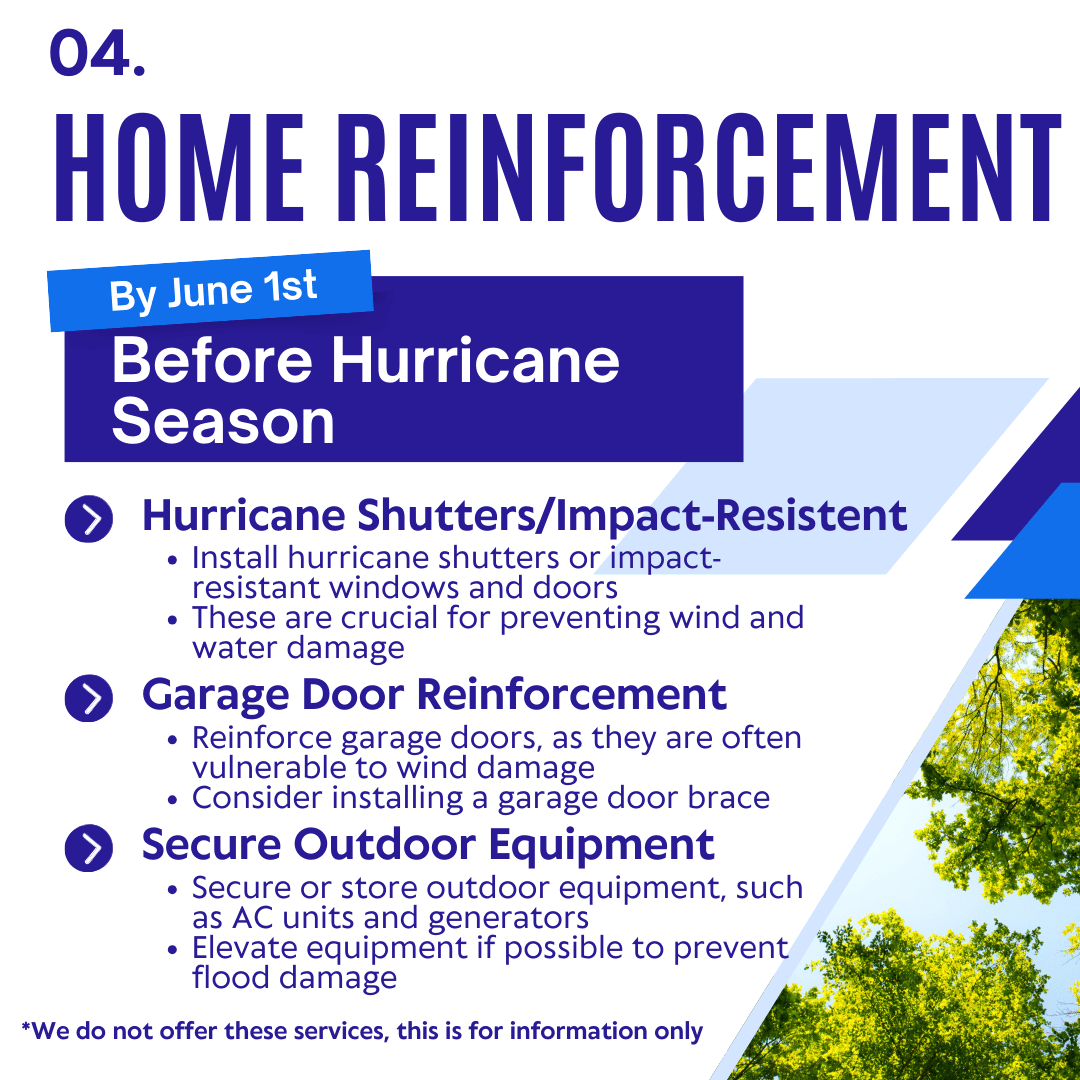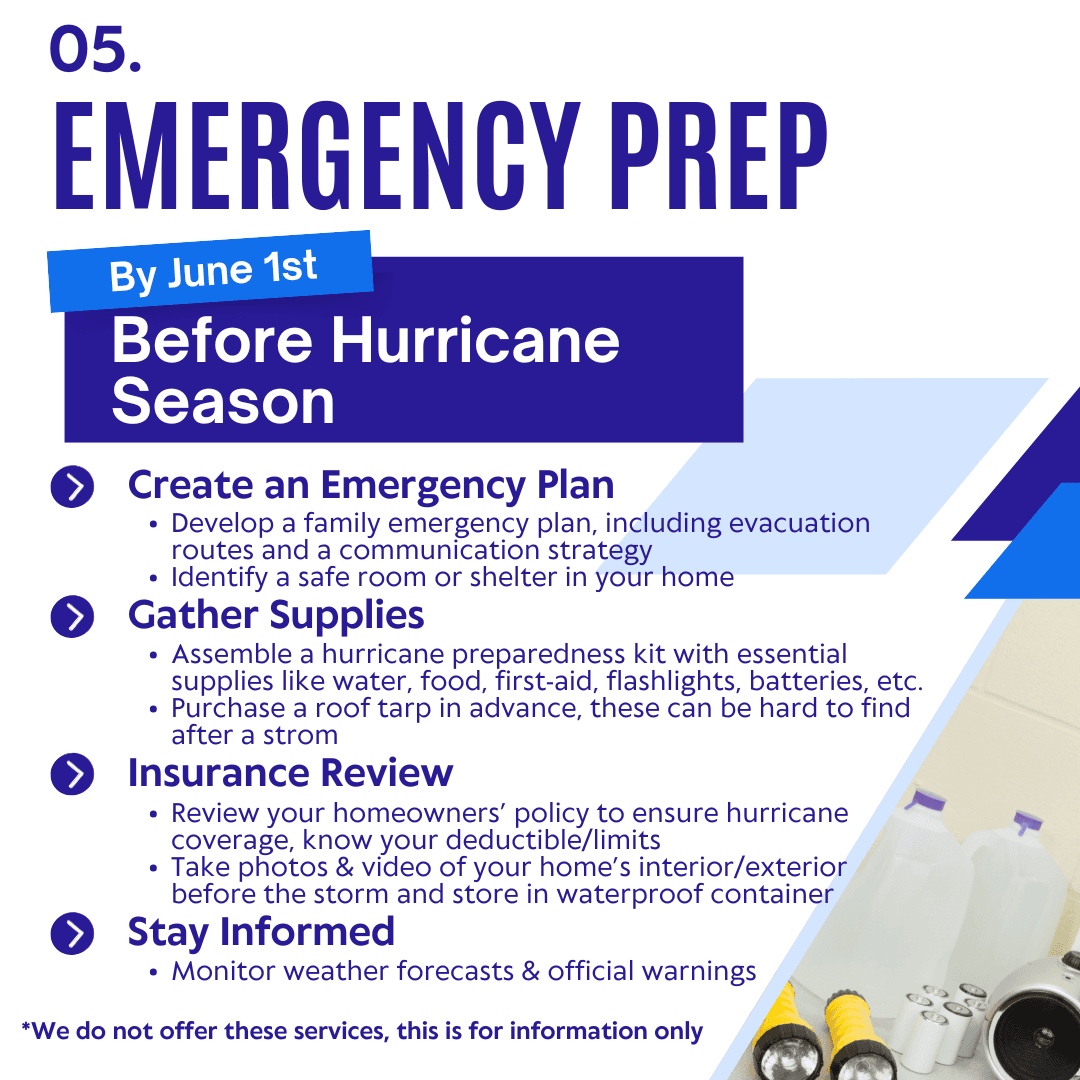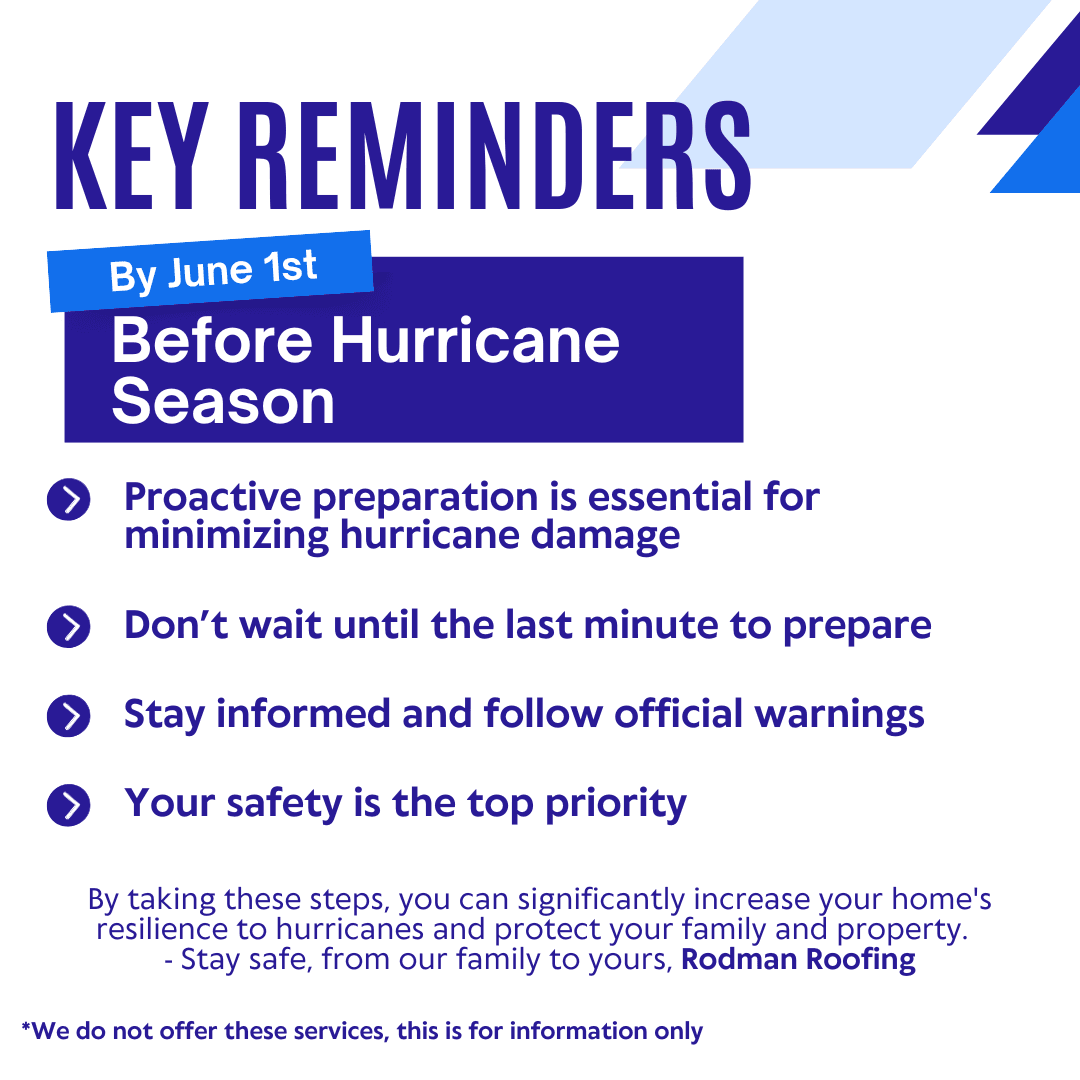HURRICANE TIPS
Suggestions And Guidelines For Roof Preparation For Hurricane Season:
There are a few things that home owners can do to help secure their roofs and homes in the event of an upcoming storm.
Clear all leaves and debris from roof areas and from gutters and drainage systems located throughout the roof. Make sure all down spouts, header boxes and gutters are clear so rain water can flow through the them. This will help prevent the water from backing up and entering the building. Trim all tree limbs and branches away from the roof areas. Homeowners should walk around the perimeter of their home and survey the fascia boards (the boards that are located just below the metal trim of the roof) as well as the soffit boards, which are located below the roof overhang areas. Rotten wood in these areas may be a sign that the roof is leaking above the eaves and that the roof is in need of repair. Rotten wood left in at the eaves of the roof could be a potential problem during a high winded storm. If the sheathing and fascia boards located at the eave of the roof where the eave metal is attached is rotted, the fastening strength of the nails that hold the eave metal in place could be compromised by the rotted wood. This would enable the wind to potentially tear the eave metal from the building in these areas. Once the eaves are exposed, the winds uplift forces could shear the roofing membranes away from the building along with the roof decking as well. Making sure these roof areas are repaired will help secure the structure from possible wind damage at the eaves. Resealing the eave metals at the flat sections of the roof is another way to secure the roof line at the eaves.
Broken roof tiles should be removed and replaced with the same or similar type roof tiles. Turbine tops should be removed and, turbine covers or caps should be installed in their place in order to prevent wind and rain from entering the building which may occur if the turbine top blows off. Any missing or damaged shingles on your roof should be replaced with the same or similar type shingles. Roof tiles that are stacked up on the roof should be secured or taken down if possible.
A suggestion may be to purchase a tarp and store it as needed in case your roof is damaged during a storm. The faster the roof can be covered the less damage the interior of the home will sustain. Roofing companies don’t usually have an abundance of tarps in their inventory as may be needed after a violent storm. There are many government programs and private companies that are available to help home owners who are in distress after a storm but, it may take time to receive the help that is needed. So it’s better to be prepared than not.
Most roofing companies will be happy to come out to your home and survey your roof for any repairs or maintenance that may be needed. A written estimate can be obtained from most reputable contractors. Check to be sure the contractor you have selected is licensed and insured.
Most of all, if you know your roof is in need of replacement, replace it if at all possible to avoid risks to your home and well being. The South Florida Building code requires that all contractors must re-nail and re-secure the existing roof decking to meet current codes when the roof is replaced. This strengthening of the roof decking along with the new Hurricane Mitigation Retrofit rule could save home owners a substantial amount on their home owner’s insurance. The Hurricane Mitigation Retrofits rule 9B-3.0475 outlines the procedures and options for installation of secondary waterproofing. Remember, that not all methods of secondary water proofing may qualify for insurance discounts. Home owners should consult their insurance companies for information on any mitigation discounts that may be available to them.


